Learn To Grow Cabbages With Kitchen Gardener Ade Sellars’ Tutorial
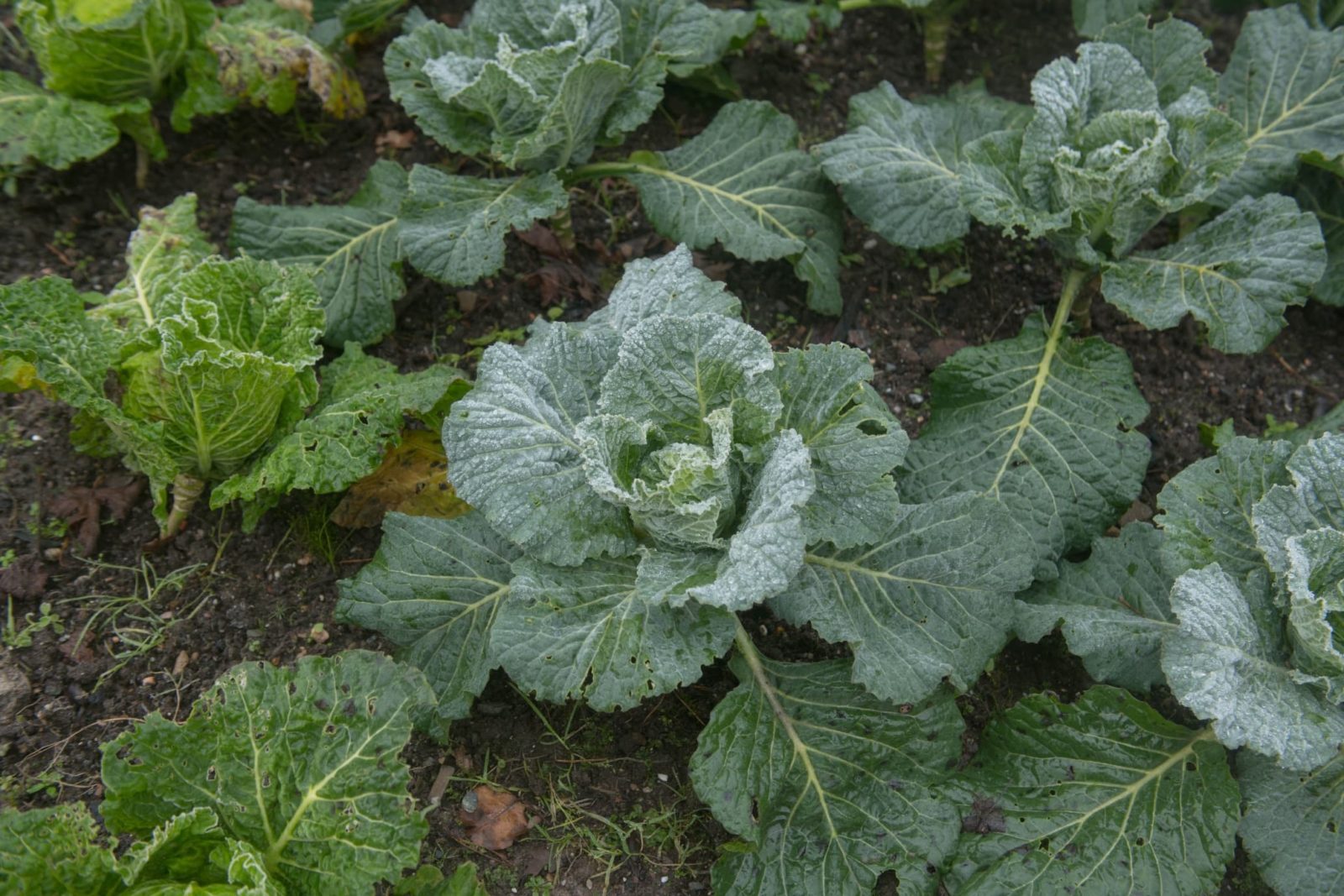
VEGETABLES > CABBAGES

Elizabeth is a Permaculture Garden Designer, Sustainability Consultant and Professional Writer, working as an advocate for positive change. She graduated from the University of St. Andrews with an MA in English and Philosophy and obtained a Diploma in Applied Permaculture Design from the Permaculture Association.
Reviewed By PETER LICKORISH

Peter is a Horticulture Lecturer and self-employed Horticulturist, with a passion for diverse areas of the industry - from garden design to the science behind plant growth and propagation. He has completed the Royal Horticultural Society’s Master of Horticulture (MHort) Award and lectures on RHS courses at Bedford College.
Contributions From ADE SELLARS

Ade is a professional Gardener, Presenter, Writer and Content Producer, with a passion for growing food in his kitchen garden. Along with his wife Sophie, they co-write the award-winning garden and food blog, Agents of Field. Having spent twenty years working in television as a Director and Editor, Ade re-trained and gained his RHS qualifications. In 2018 he gave up the London life to move to rural Suffolk to build his own kitchen garden and lead ‘The Good Life’.
IN THIS GUIDE
CABBAGE GUIDES
Cabbages are one of the most cultivated crops and with good reason – they come in many shapes and sizes and have many culinary uses.
Understanding how to grow them is a must for most UK home growers.
The cabbage family (Brassicaceae) contains many of the most common crops grown in UK gardens – including broccoli, cauliflower, kale, kohlrabi, turnips and radishes.
Plants within the cabbage family which have the name ‘cabbage’ belong to several different species and cultivar groups.
In this guide, we will focus on cabbages of Brassica oleracea – the Capitata and Savoy cabbage cultivation groups.
Though there are also Chinese cabbages which are Brassica rapa (Pekinensis Group).
Overview
| Botanical Name | Brassica oleracea |
| Common Name(s) | Cabbages |
| Plant Type | Vegetables |
| Native Area | Cultivated |
| Hardiness Rating | H3/H4 |
| Foliage | Brassica leaves or tight heads depending on type |
Sunlight
Preferred
Full sun; some in light shade
Exposure
Sheltered or exposed
Size
Height
Varies
Spread
Varies
Soil
Preferred
Any firm, fertile soil with plenty of organic matter
Moisture
Reasonably moist
pH
Neutral to alkaline
These cabbages descend from Brassica oleracea var. oleracea, the wild cabbage, native to coastal southern and western Europe.
The long process of cultivation and plant breeding means that there are now a huge range of cabbages to choose from when looking for crops to grow in your garden.
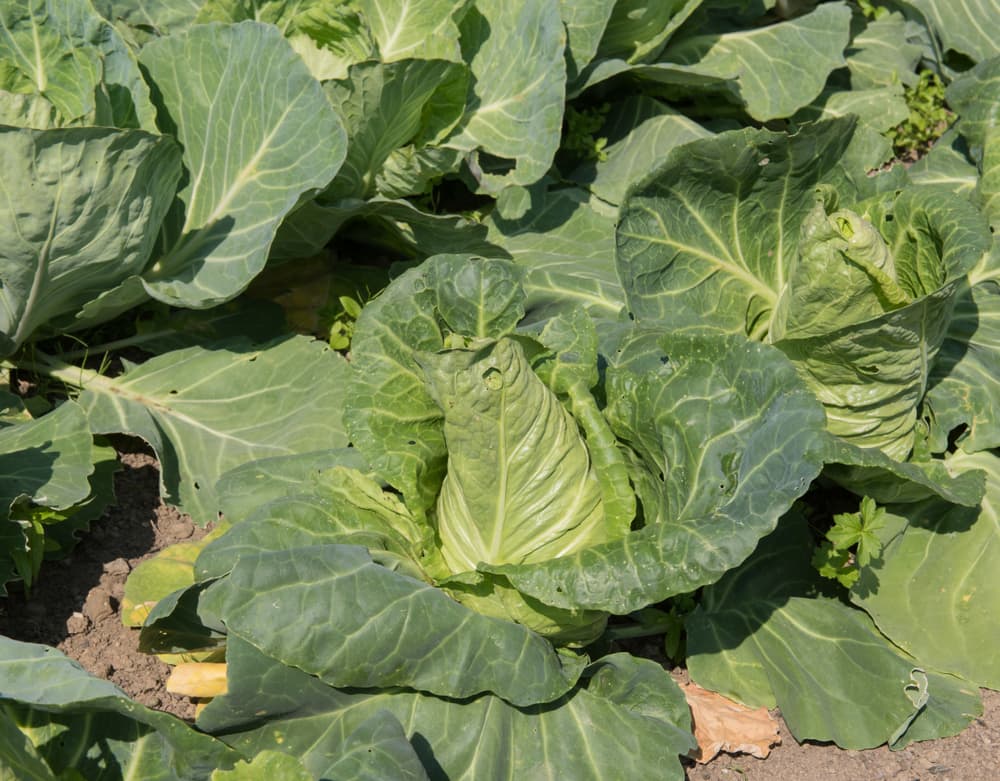
While cabbages are most frequently grown as annual crops (in rotation in a vegetable garden) it is worth noting that there are also several perennial cabbage varieties to try.
Cabbage Varieties
Cabbages grown as crops in an annual vegetable garden are most usefully divided according to the season in which they are harvested.

For a spring crop, try:
- ‘Advantage’
- ‘Duncan’
- ‘Durham Early’
- ‘Spring Hero’
- ‘Wheelers Imperial’
For a summer crop, try:
- ‘Golden Acre’
- ‘Hispi’
- ‘Kilaxy’
- ‘Red Jewel’
- ‘Tete Noire’
For autumn or winter harvesting, try:
- ‘Aubervilliers’
- ‘Marabel’
- ‘Minicole’
- ‘Tundra’
I also highly recommend considering growing perennial cabbage varieties, such as the everlasting cabbage and Asturian tree cabbage.
These do not form heads, but do provide an abundance of fresh leaves to use in a range of recipes over a number of years.
How To Grow Cabbages
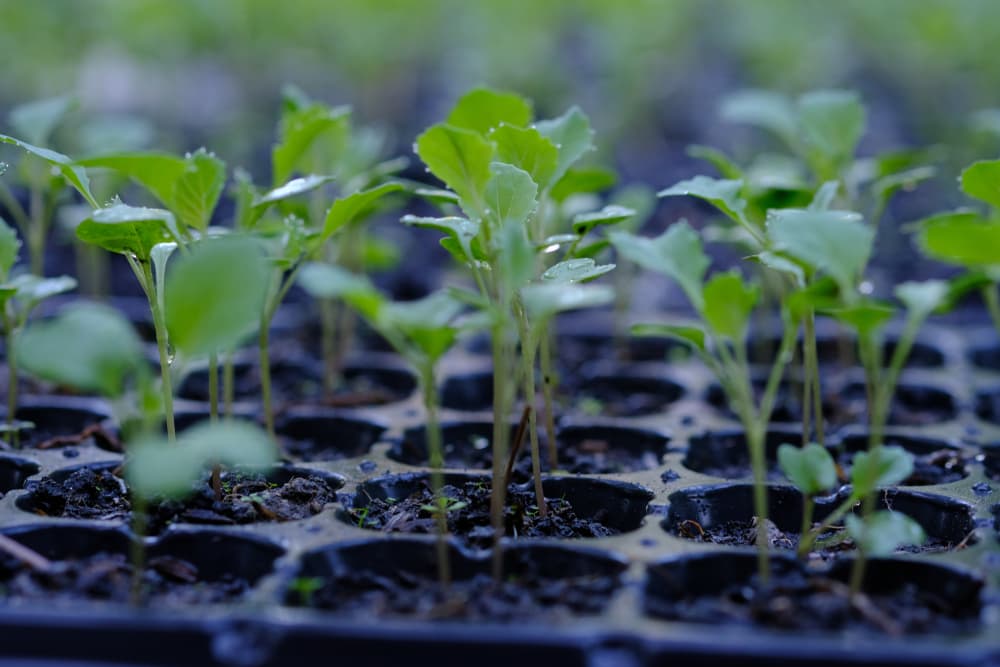
Summer cabbages are sown from late February or early March until early May indoors (or undercover).
Winter cabbages are usually sown in April or May indoors or outdoors and planted into their final growing positions in June or July.
Spring cabbages are usually sown outdoors in July or August and placed into the positions where they are to overwinter in September or October.
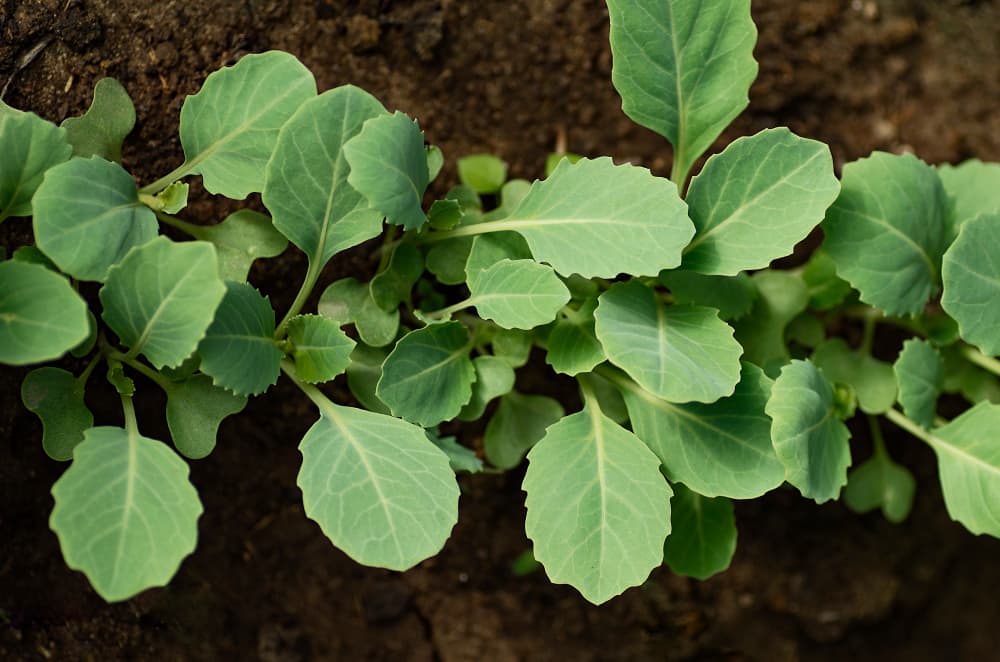
Cabbages can be sown in pots, modules or soil blocks, or placed into a well-raked and firmed seed bed where they will germinate and begin to grow for a short while before being moved into their final growing positions.
See our detailed guide to sowing cabbages from seed for more information.
Planting Out
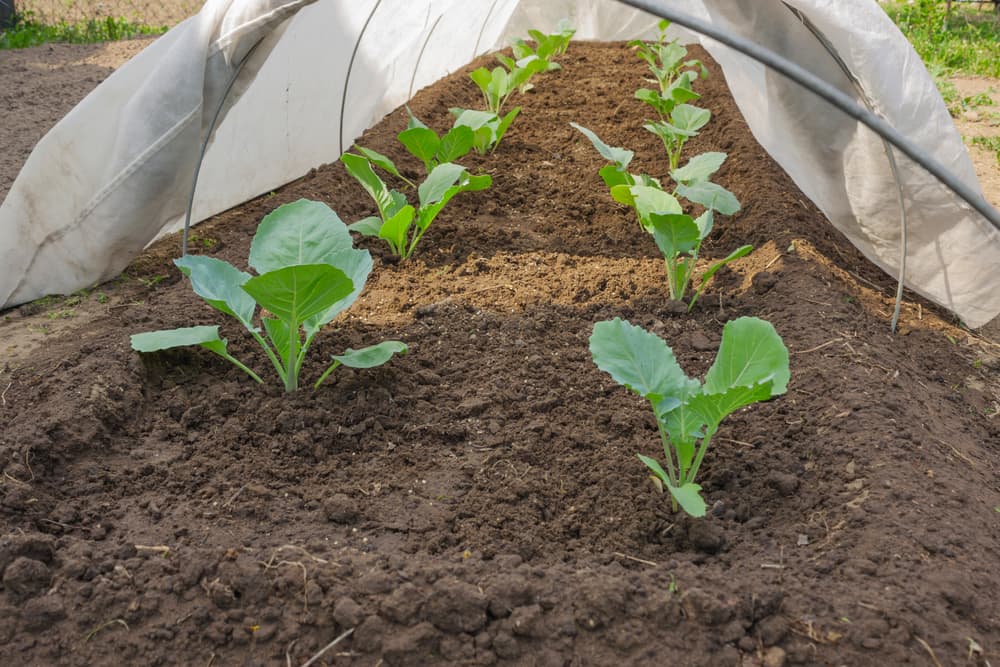
Cabbage plants will be ready to move to their final growing positions when they have five or six true leaves.
Summer cabbages end up in the garden by May or June.
Winter cabbages are transplanted into their growing positions in late June or July.
While spring cabbages are planted for overwintering in September or October – often once summer crops (usually legumes) have been removed from the bed.
How (And Where) To Plant
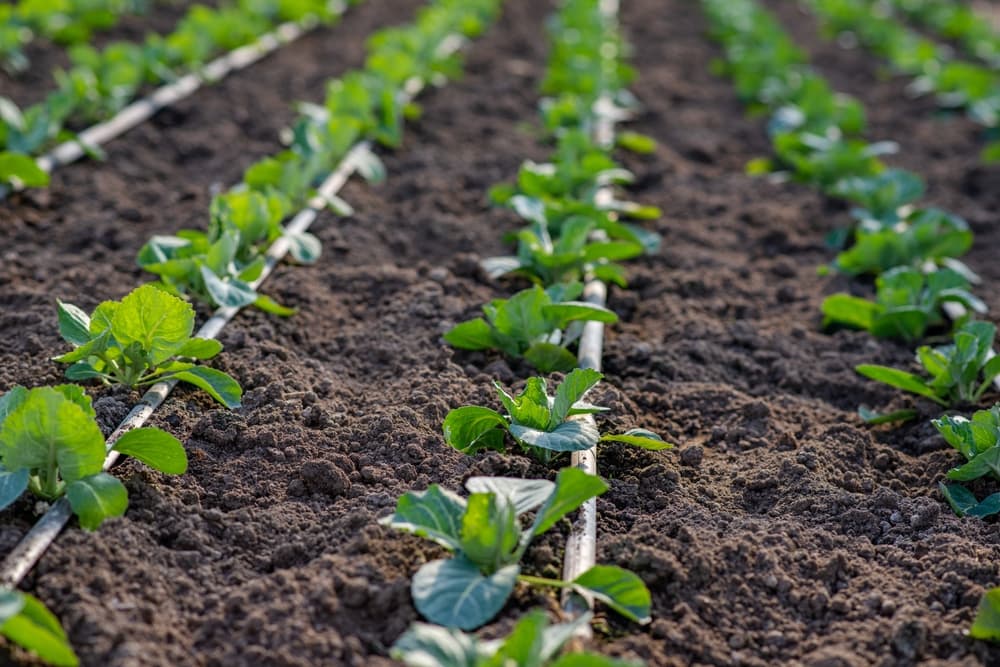
Annual cabbages should be included within crop rotation plans, so deciding where to place them should involve consideration of other crops you are growing.
It is also a good idea to think about companion planting (see below) before committing to the placement of your crop.
Crop rotation is important for annual members of the cabbage plant family, which should not be planted in the same location the following year.
In traditional crop rotation schemes, brassicas are preceded by nitrogen-fixing legumes (since they appreciate the extra nitrogen left behind by these crops in the soil) and are often followed by potatoes, though there are a range of different options.
Depth & Spacing
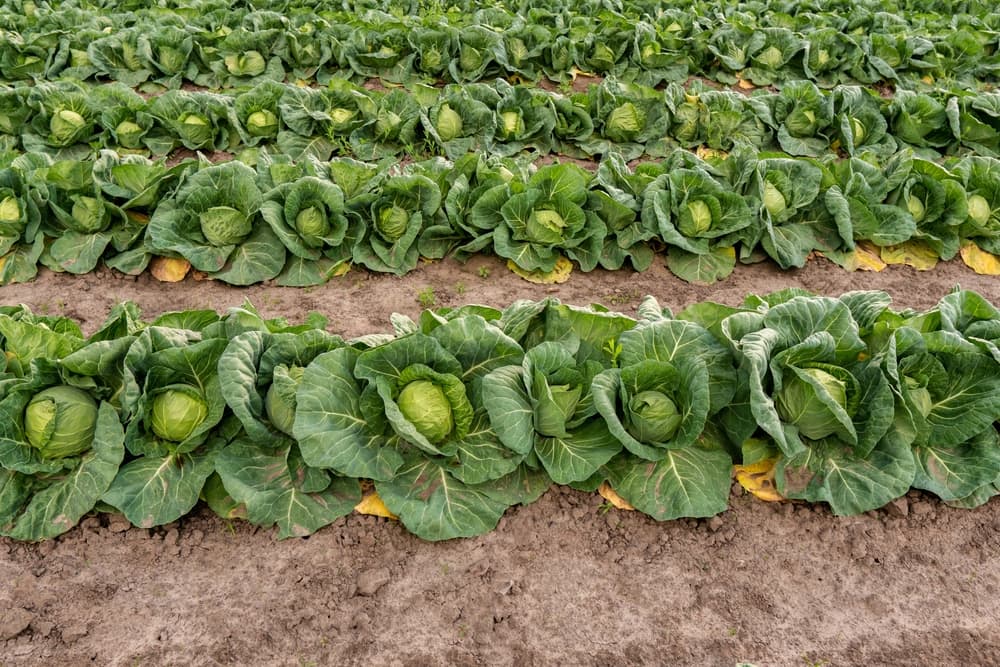
Transplanted cabbage seedlings or young plants should be planted so that their lowest leaves are at ground level.
They should be placed into holes.
You should then water them well, filling the hole up completely and allowing it to drain several times before you firm the soil back in around them.
Spacing is not an exact requirement, and there is certainly some flexibility.
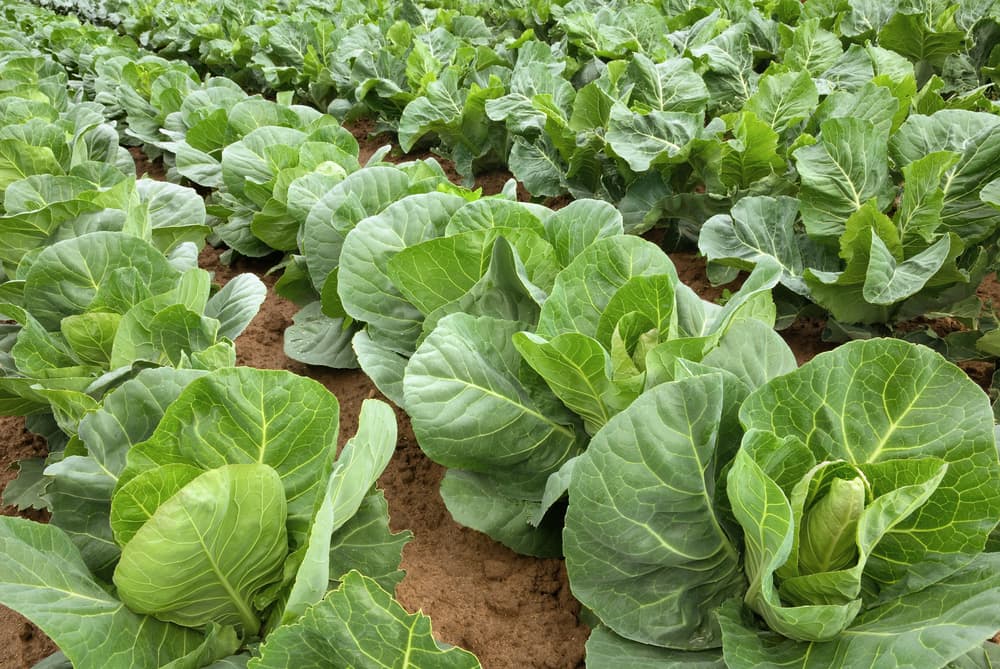
Spacing will depend also on the specific type and variety of cabbage you are growing.
As a general rule of thumb, most cabbages can fit within 1 sq ft in a square foot garden, and should be planted at between 30 and 45cm apart when grown in rows.
Spring cabbages are typically planted just 10cm apart, then thinned (and eaten) to give an eventual spacing of around 30cm by late February or March.
Cabbage Plant Care
Cabbages can be relatively easy crops to grow, as long as you meet their basic needs.
Preferred Aspect
A vegetable bed for growing cabbages and a range of other annual crops should ideally be positioned in full sun, in a reasonably sheltered spot.
Though cabbages can cope with some exposure and some types can cope with a little shade.

If growing cabbages in traditional vegetable garden rows, it is usually best to orientate these north-south, so the sun reaches all the plants along the rows.
However, there are many different garden layouts to consider and you definitely do not have to grow in rows, though it can help you maximise the use of space.
Soil Requirements
Cabbages need plenty of moisture in the soil and plenty of nutrients.
The soil needs to be firm, but not too compacted and should also drain moderately freely, while also retaining moisture.
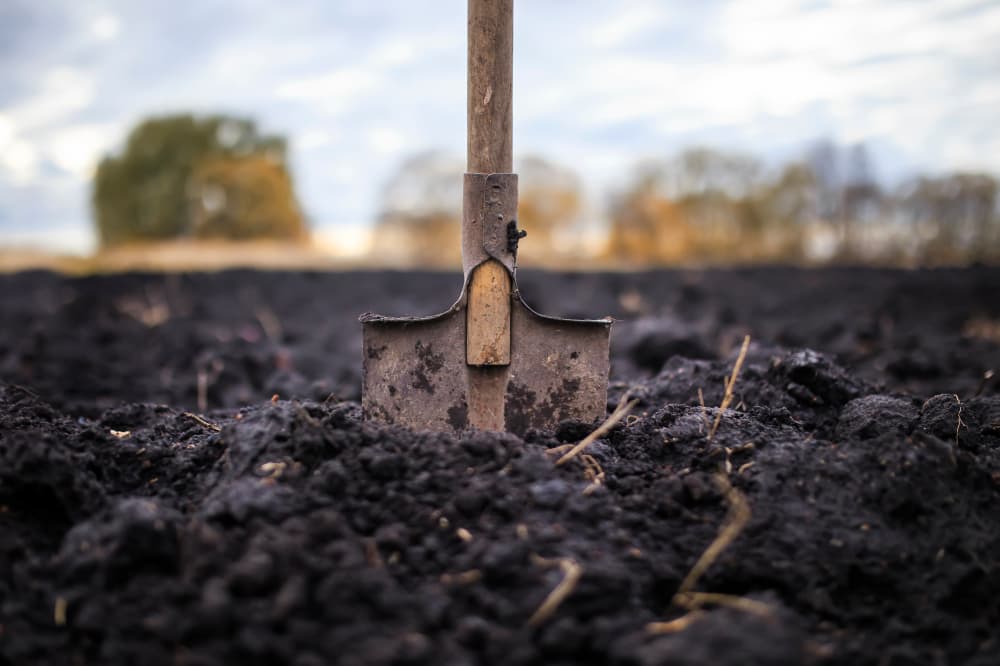
As leafy greens, cabbages have quite high nitrogen needs, and also need other essential nutrients from the soil.
Especially if the soil in your garden is poor and low in nutrients, it is important to top dress the area before planting with plenty of well-rotted manure or a good quality compost to make sure that the soil is healthy and rich in organic matter.
An acidic soil is not suitable for cabbages and on soils slightly below the neutral pH level of 7.0, steps should be taken to increase soil alkalinity.
This could be by applying garden lime, for which it is advisable to wear a mask, or enriching soil with spent mushroom compost.
Watering
Cabbages need, to give a rough idea, around 2.5-4cm of water each week – either delivered by you, or through natural precipitation.
Water cabbages during prolonged dry periods (ideally with harvested rainwater where possible).
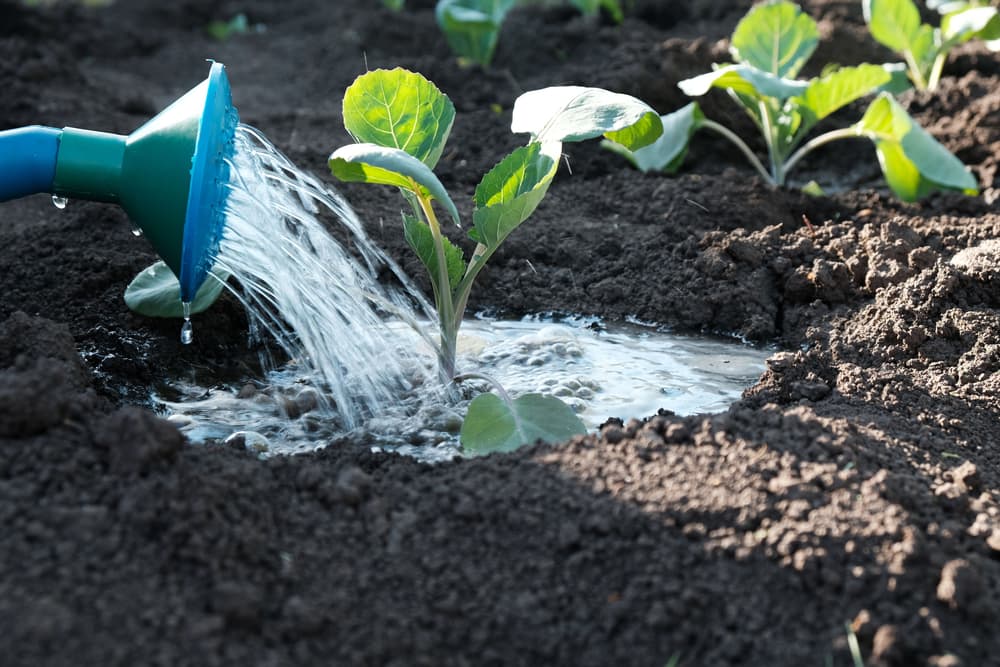
Try to water deeply every ten days or so (when growing outside) rather than watering shallowly more frequently.
Water particularly generously when heads begin to form and this should greatly improve their size.
Preventing Splitting
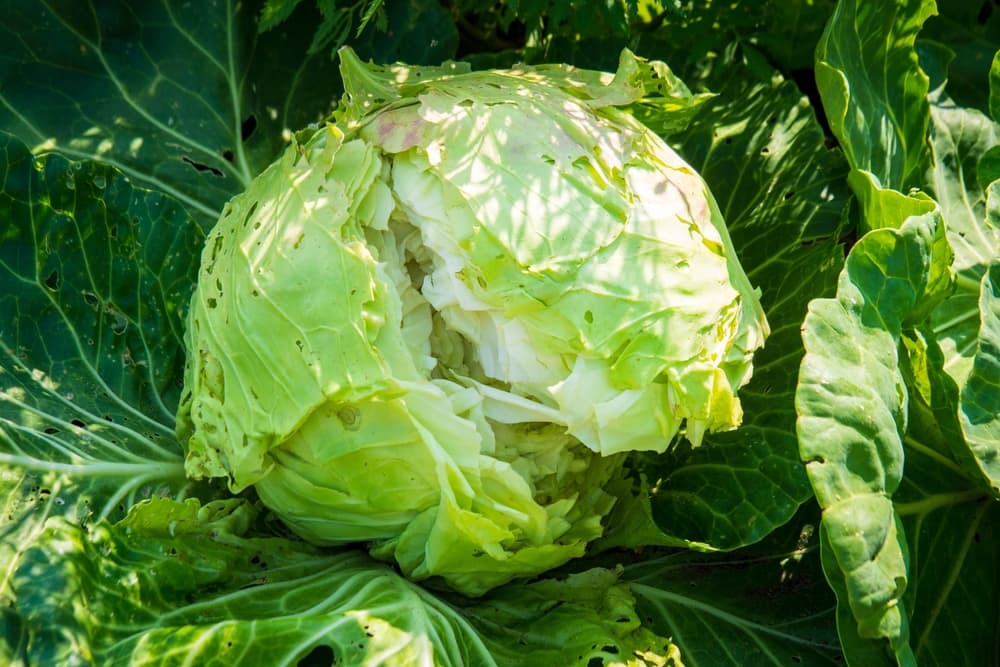
When cabbage heads split, this is usually caused by heavy rainfall or excess water which comes suddenly after a period of drought or drier weather.
It can also be caused by excess fertilisation later in the growing season.
To prevent splitting:
- Water deeply and consistently throughout the growing season.
- Use organic mulch around the plants. This will help retain soil moisture, as well as delivering slow-release fertilisation for your cabbages.
- Avoid the use of non-organic fertilisers (especially high-nitrogen ones).
- Try to harvest your crop as soon as the heads are firm.
Remember, split cabbages will still be fine to eat.
You just need to make sure that you use them up as soon as possible because they will not store as well.
Container Growing
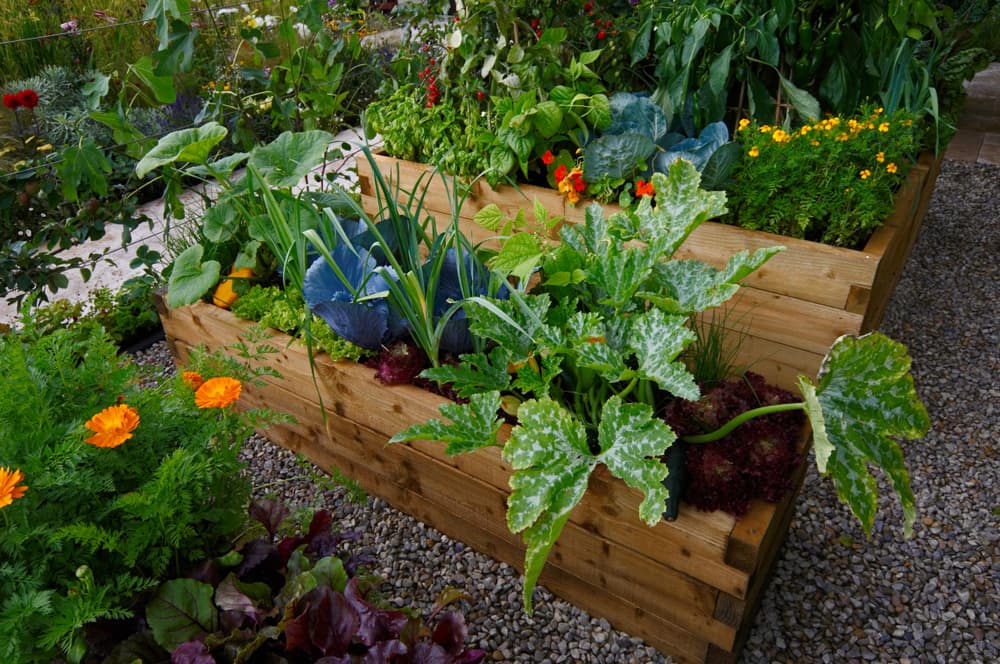
Larger-headed cabbages take up quite a bit of space and so are not usually the best choices for containers in very limited spaces.
Since you will usually only be able to fit a single plant in each container, it may be better to opt for kale, or another leafy brassica crop that you can harvest more, over a much longer period of time.
But smaller cabbages can be planted in containers, as long as you fill them with a suitable, fertile, firm, moist yet moderately free draining medium and stay on top of their watering needs.
Plants in pots will need more watering than those growing in the ground.
Transplanting Cabbage
If you wish to move a perennial cabbage to a new spot, the best times for transplantation are spring or autumn, when the temperatures and moisture levels should mean less risk of transplantation shock.
Companion Plants

Just as peas and beans can be good placed in a bed before cabbages for nitrogen fixation, so too they can be beneficial when planted alongside them.
Alternatively, you can grow onions or leeks alongside brassicas, which may help in pest control (but don’t grow legumes and alliums together).
Of course, cabbages can be grown with other members of the same family, though they will share the same problems, this can fit in well with crop rotation.
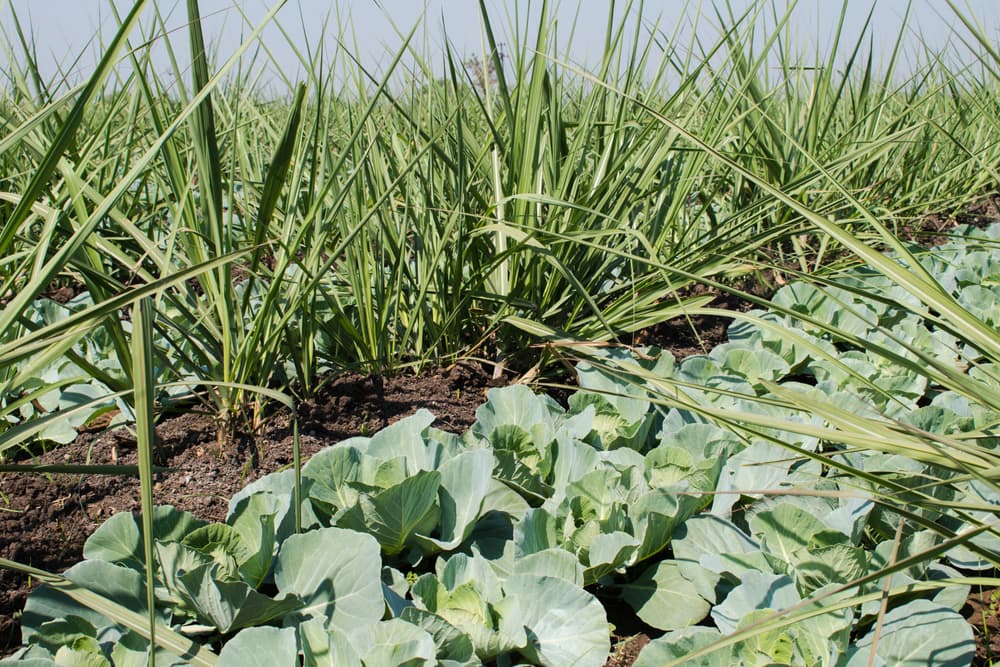
Beetroots and chard like similar conditions to cabbages and can also work well alongside them.
And intercropping cabbages (which are slower growing) with lettuce or other quick leafy crops is another excellent idea.
A wide range of flowers and herbs can also be beneficial companions to help in pest control for cabbages and other brassica crops.
Common Pests & Problems
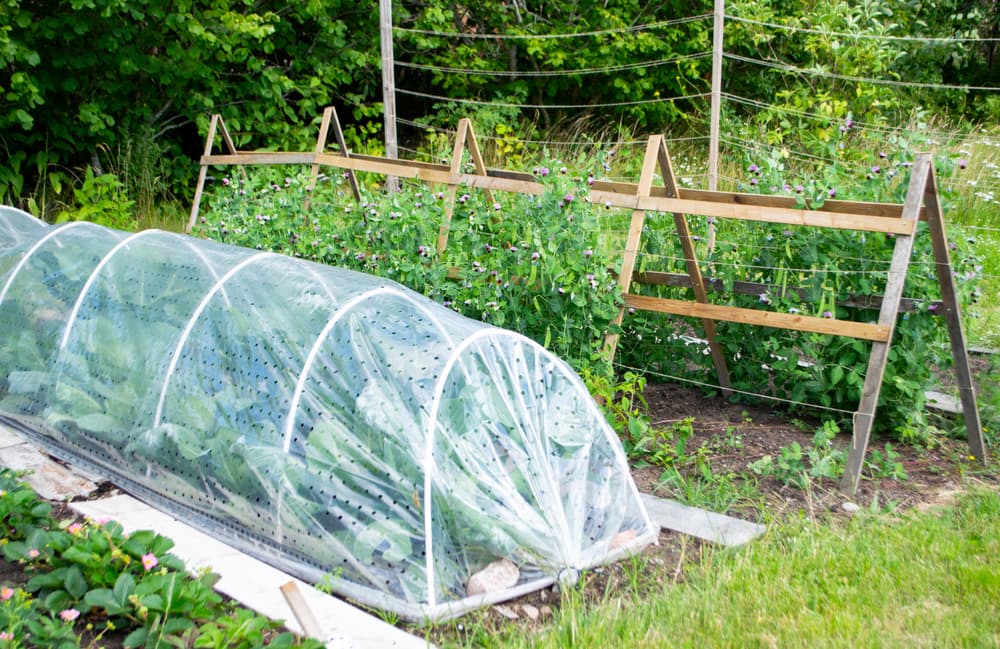
Some of the most common pests to plague cabbages are:
- Cabbage root fly
- Cabbage white caterpillars
- Slugs and snails
- Birds
Making sure you attract plenty of wildlife to your garden can help keep pest numbers down and help you achieve a natural balance in your garden.
But it is often a good idea to create a physical barrier over your cabbages to prevent excessive damage by netting with a fine mesh.
Avoiding growing cabbages where this problem has occurred, rotating your crops, improving drainage, and adding lime to more acidic soil to reduce pH levels is the best way to reduce the chances of this issue recurring.
“I strongly recommend growing cabbages within a crop rotation plan, because diseases like clubroot, which mainly attack brassicas, can linger in the soil for many years,” says Master Horticulturist Peter Lickorish.
“It reduces roots to a crumpled mass, starving plants of water and nutrients. The bigger the interval between growing them in the plot, the less likely it is that this and other diseases will linger.
“Clubroot can live on the roots of related weeds such as Capsella bursa-pastoris (shepherd’s purse), so keeping vegetable patches well-weeded is important.
“Otherwise, these could keep the clubroot disease perpetuating in the soil. Also, as they are hungry plants, growing them in the same plot each year would deplete your soil.”
